This engrossing book pits the legionaries of Imperial Rome against their Germanic and Sarmatian opponents in the 2nd century AD. Photographs, specially commissioned artwork plates and mapping complement the authoritative text in this engrossing study of Imperial Rome at war.
Shortly after Marcus Aurelius came to power in AD 161, the Roman Empire was racked by a series of military crises. While unrest in Britain and a new war with Parthia were swiftly dealt with, the invasion of Roman territory by the Chatti and Chauci peoples heralded a resurgent threat from the empire's European neighbours. Soon the Marcomanni and the Quadi, as well as the Dacians and the Sarmatian Iazyges, would attack the Romans in a series of savage conflicts that continued until AD 175 and would see the first invasion of Roman Italy since the beginning of the 1st century BC.
80 pages, colour artwork plates and maps; black & white and colour photographs and illustrations.
Table of Contents
Introduction
The Opposing Sides - Army composition, recruitment and motivation, organization and command, tactics and equipment.
Carnuntum, AD 170
The Battle on the Ice, AD 172
The Miracle of the Rain, AD 174
Analysis
Aftermath - Barbarian effectiveness, Roman effectiveness
Bibliography - sources, inscriptions and coins, ancient works, modern works.
Index
Executive summary, a great read of three significant battles of the Roman empire prior to its collapse; recommended to those with an interest in Imperial Rome, battles of the day, or a well written and informative history as a leisure read.
The narrative flows well from the introduction of the subject, which is sufficiently well explained (without being dry) to give a good basis for the following accounts of the three battles that make up this title. All the basic information is there, as described above in the table of contents. This introduction gives context to the rest of the book and sets the scene.
The writing style is one of conversation, rather than a lecture or strict recounting of facts loosely tied together in a book, where the author acknowledges the reader and includes him/her in the discussion with the use of 'we' and 'our'.
Latin terms are used throughout the book, together with an English translation, frequently with the singular / plural where applicable, as well as references used, which are numerous.
There is good analysis of the battles and qualifications for that analysis, with caveats where necessary, something I appreciate given the incomplete nature of the information available (which is also acknowledged in the text) and that this is, really, one person's interpretation of what has gone before.
The book is balanced with equal analysis of both sides, does not go down any particular rabbit hole, is impartial in that there is no bias for either side; again, something I appreciate given this is one person's interpretation of what has gone before.
The illustrations are worth the book itself, with several images of period carvings, reliefs, columns - which can be seen today, complimented with artwork showing the combatants, maps, and a diagram showing the formations as they faced each other for the battle of the ice.
The battles themselves are well summarized without skipping critical information, going into speculative detail, or minimising the event; those battles being Carnuntum, the Battle on the Ice, and 'Mircale of Rain'. Each given equal space in the book and supporting images / side bars expanding on a point.
There is, as with anything Roman, a constant thread of politics running in the background and how Rome defeated or brought off enemies, then used those as enemies to fight others, with varying results.
Easily recommended, the book is true to the title, is all content, and a great read; I cannot find a fault to mention, there is even first-person accounts included, albeit translated, how about that.
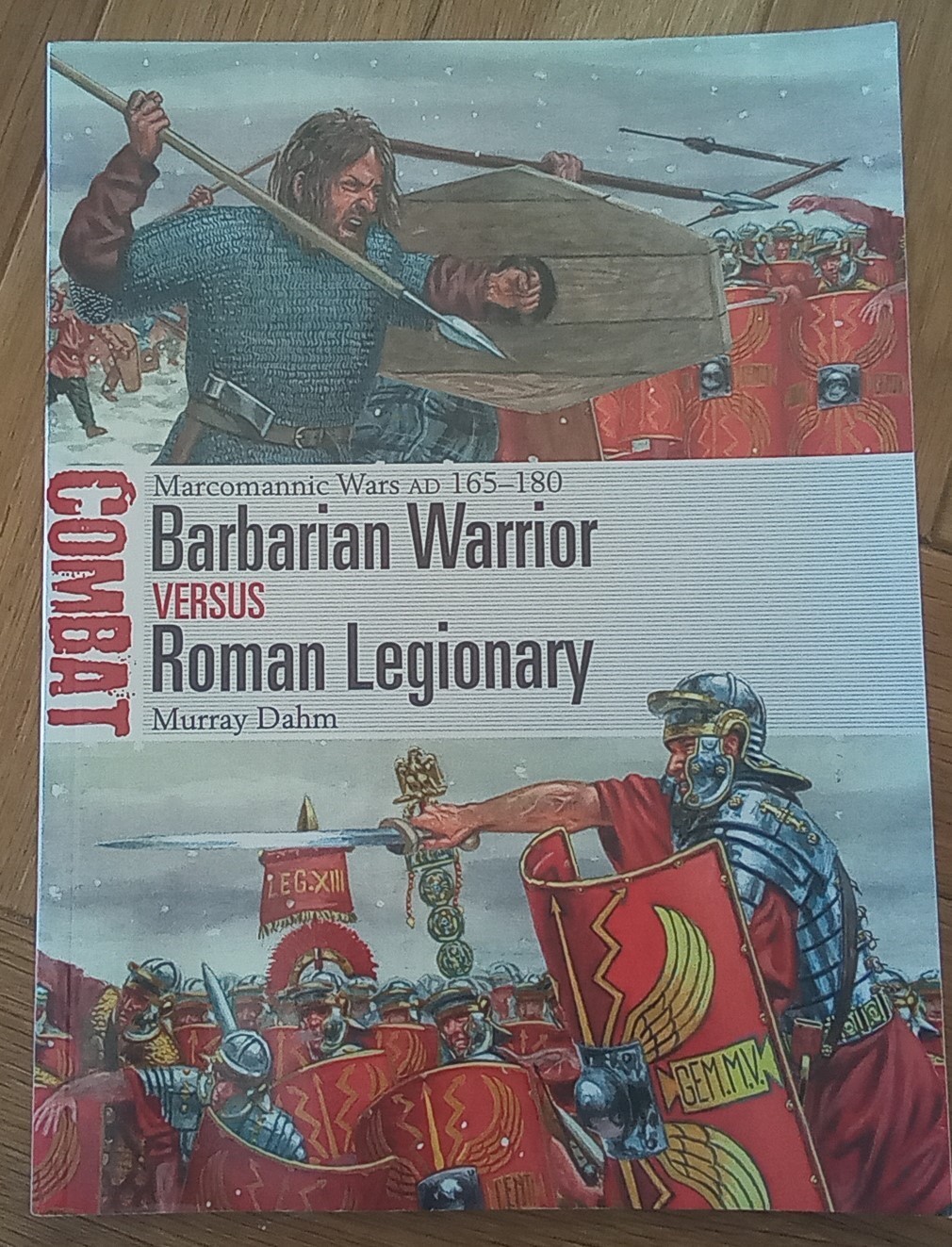
The Romen Legionary as he would have been in the day.

A close up, the entire column is further below.
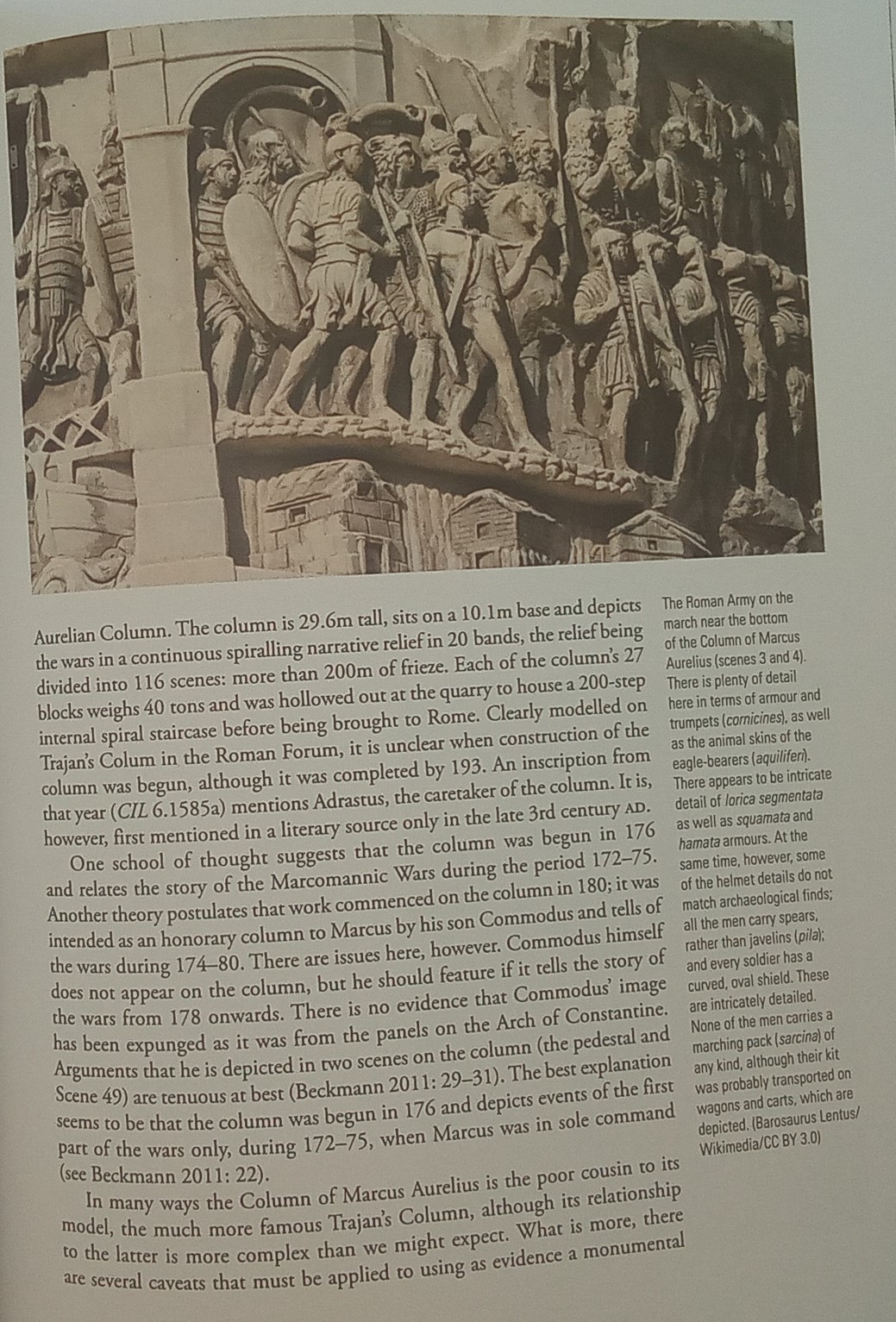
A map, the effort of moving across such long distances, whether on foot or horseback, is exhausting.

Like being there,
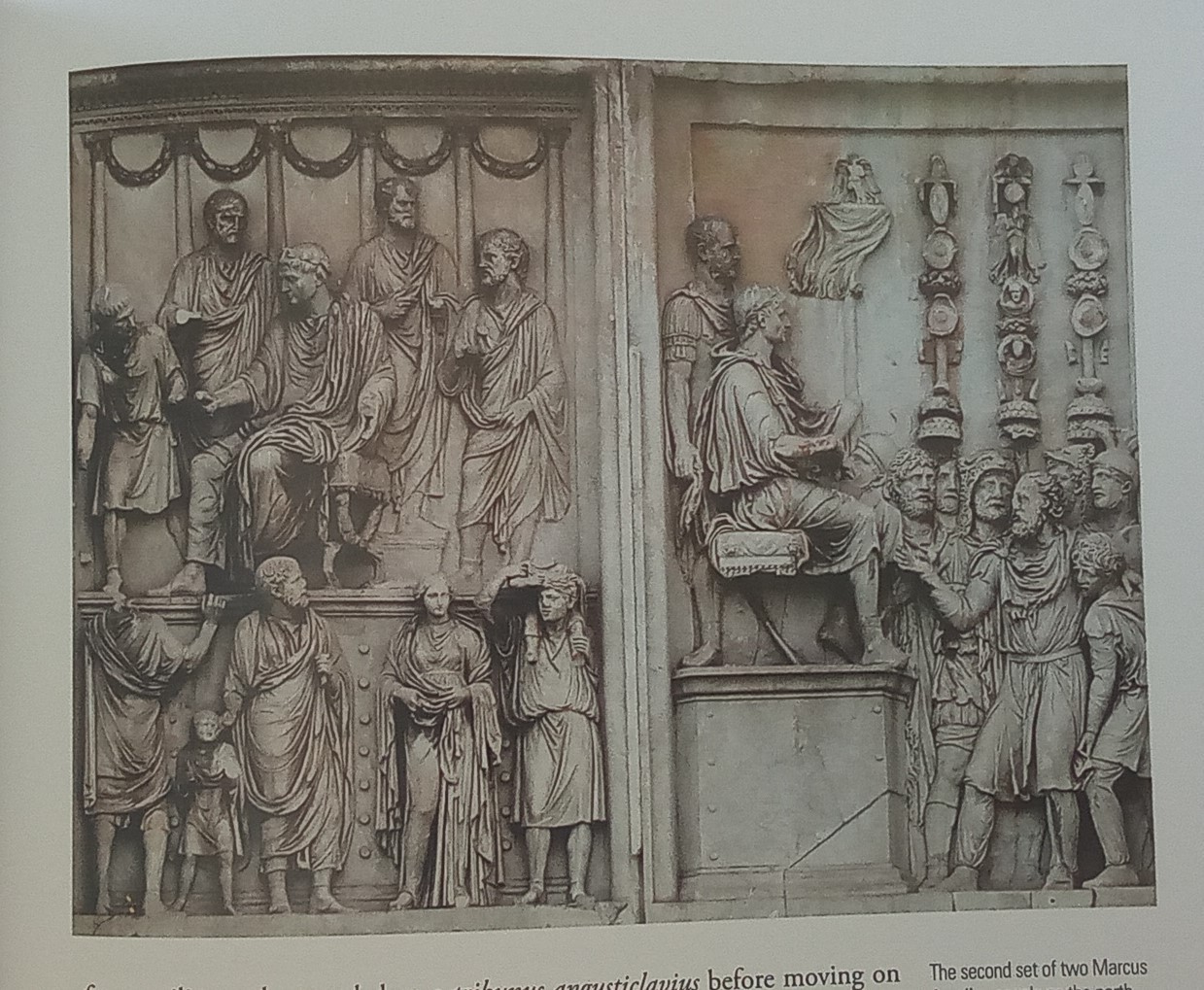
The Danube would be little different now as it was then
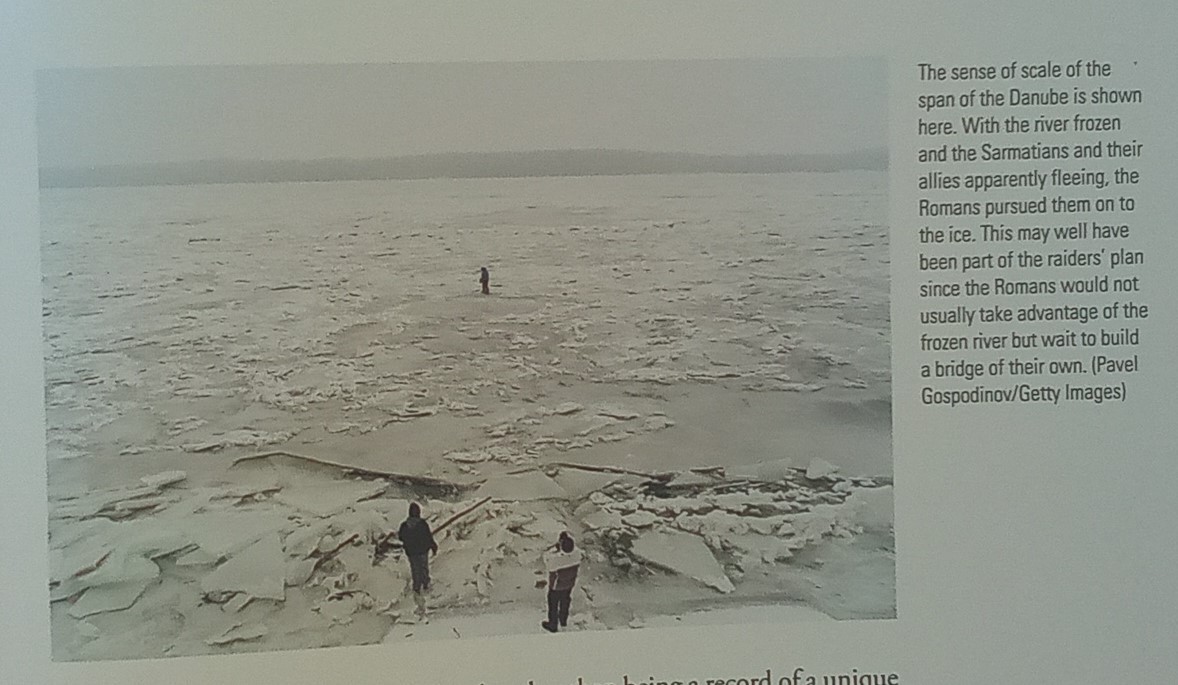
As good as a photo,
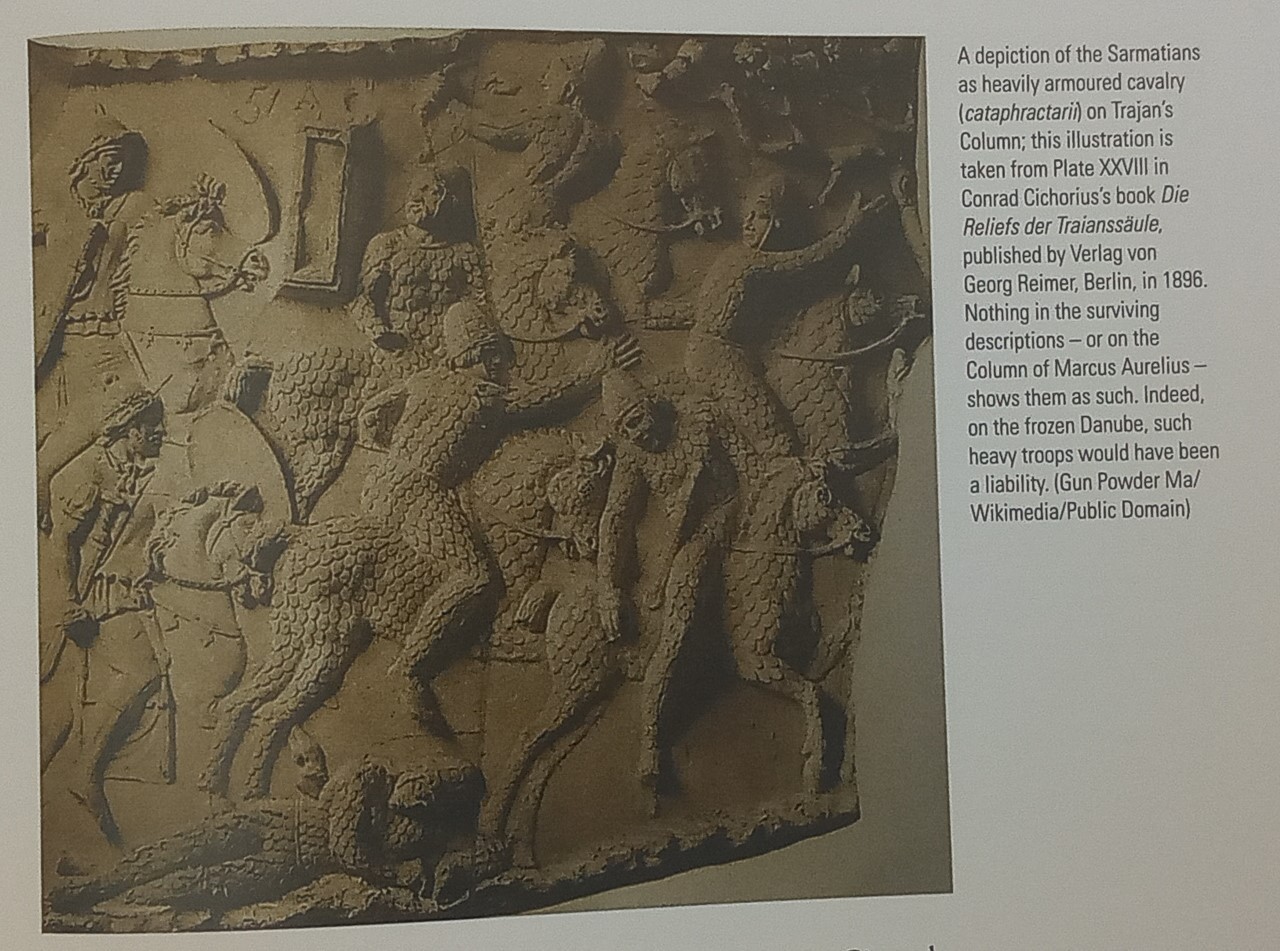
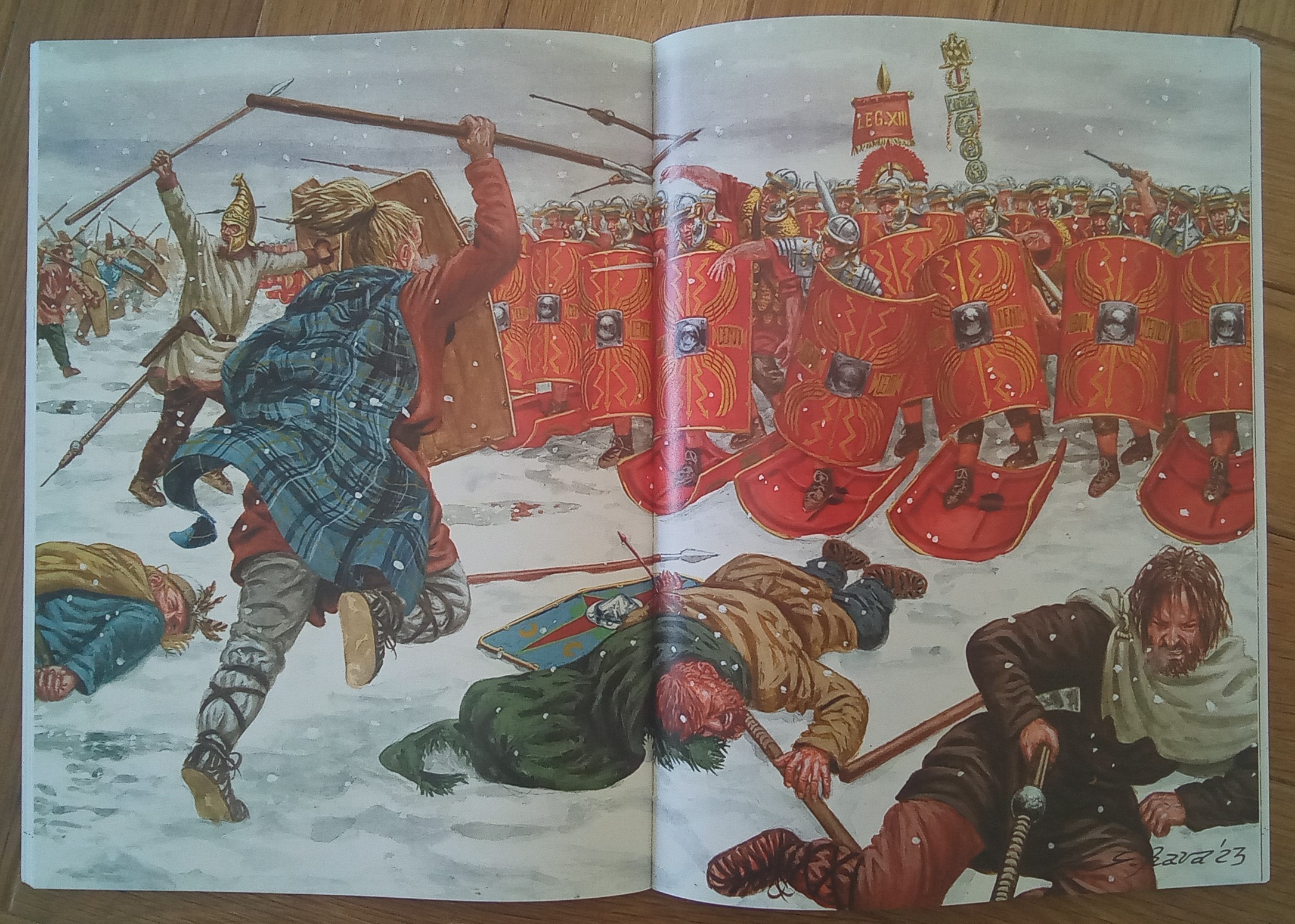
The next best thing to a film of the battle...






























